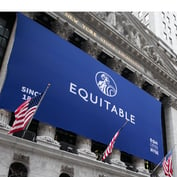What Gramm-Leach-Bliley joined together in the waning days of the last century market realities have now officially put asunder.
The $11.5 billion acquisition of Travelers Life & Annuity by MetLife announced last week put the final nail into the coffin of the storied merger between banking and insurance giants Citibank and Travelers that created Citigroup.
Actually, the two entities merged a year prior to GLB passage in 1998 without, in essence, benefit of clergy. The deal was predicted to transform the landscape of the delivery of financial services in this country in 21st century.
It certainly transformed the political landscape in Washington, giving a boost to efforts to tear down the walls between banking, securities and insurance set up in the aftermath of that other transformative event of the last century, the stock market crash of 1929.
The deal also turned Travelers CEO Sanford Weill into a Wall Street legend, particularly after he engineered the ouster of his co-CEO and Citibank holdover John Reed two years later. And his somewhat reluctant retirement in 2003 may have set in motion the unraveling of his vision that last weeks announcement represents.
Fitch analyst Doug Meyer said the Travelers life spinoff was notable for its admission that the life insurance business failed to provide the growth synergies envisioned in 1998. “The cross-sell of life insurance to retail consumers virtually confounds all banks,” Meyer said. “The strength of the [Citi-Travelers] merger stemmed from the consolidation of the corporate commercial business with trading and investment banking, and the scale of its consumer finance business.” But the mere 6% Travelers contribution to Citigroup net income last year, and the meager prospects for upping that number, seemed to seal its fate.








 January 26, 2005 at 07:00 PM
January 26, 2005 at 07:00 PM







